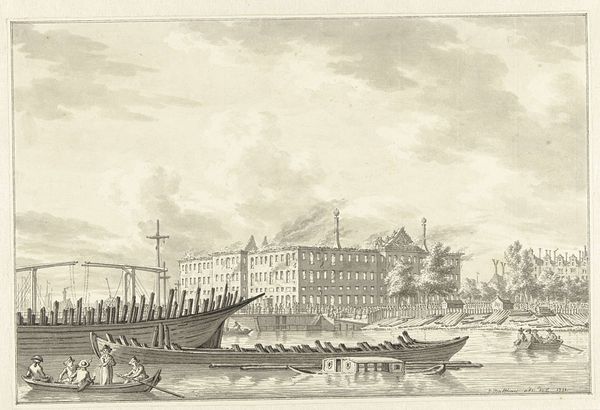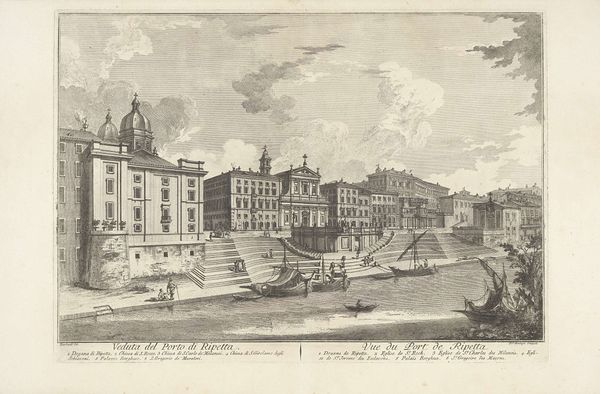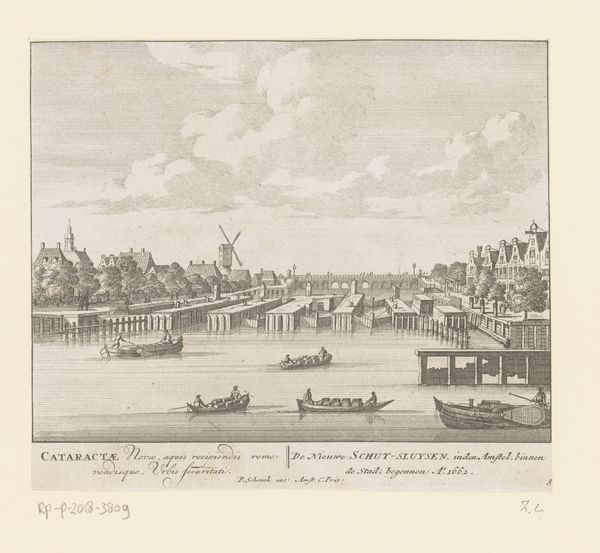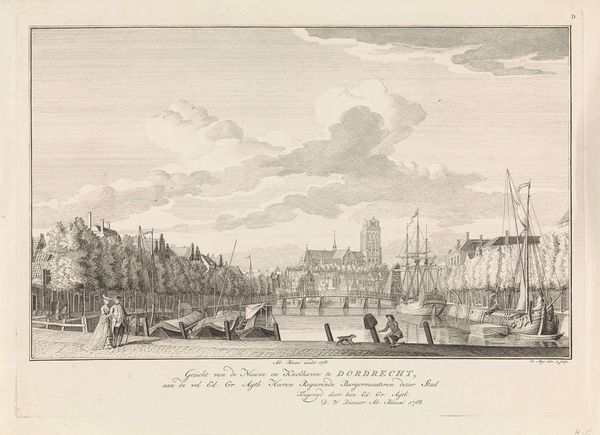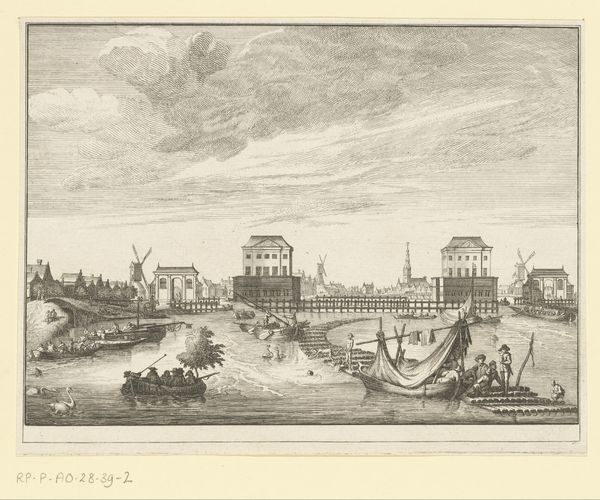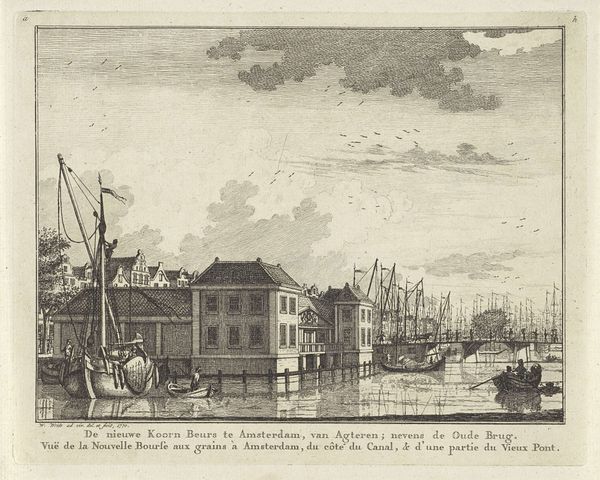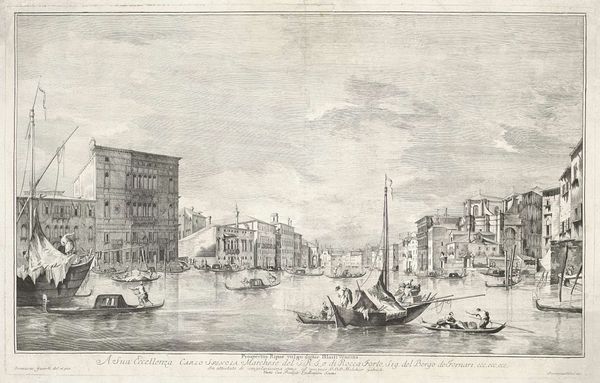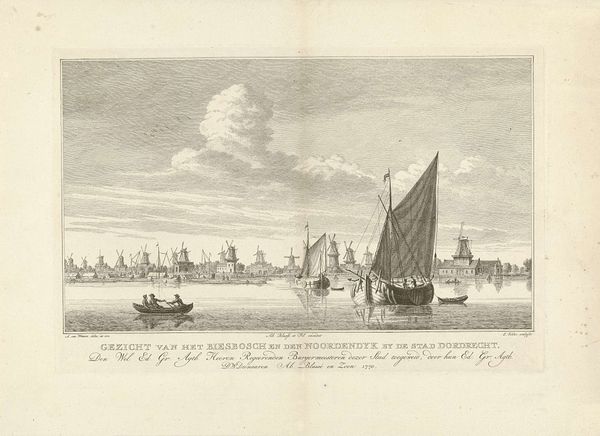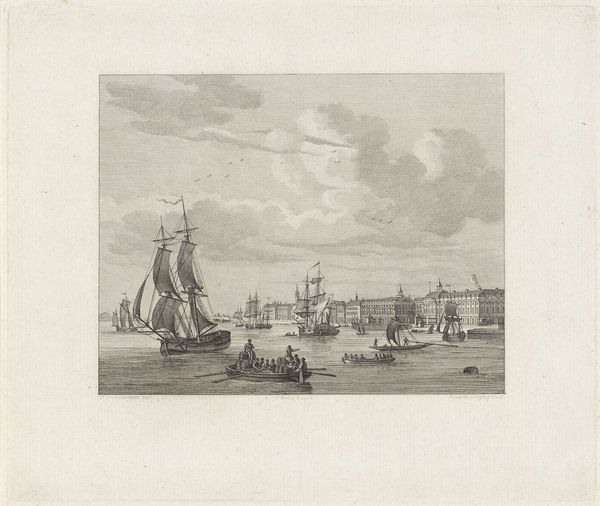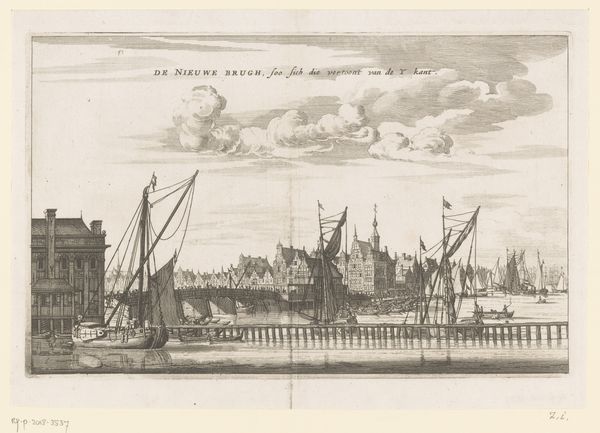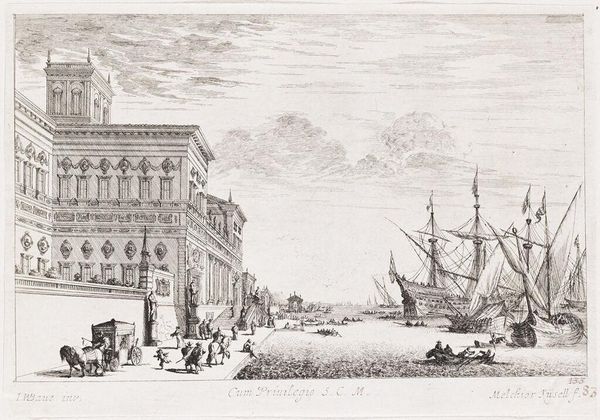
Dimensions: height 227 mm, width 292 mm
Copyright: Rijks Museum: Open Domain
Curator: This engraving, titled "’s Lands Zeemagazijn na de brand, 1791," presents the aftermath of a fire in Amsterdam's naval warehouse, an event captured anonymously. Editor: It's incredibly bleak. The somber tonal range perfectly conveys a sense of devastation and perhaps, an undercurrent of social upheaval. Look at how the water reflects not the sky, but only broken building shadows. Curator: Observe the artist’s strategic use of line. The precise details rendered through engraving delineate the scale of the destruction with striking clarity, each broken window a dark void, contrasting against the rigid architectural framework still standing. Note too how those tiny human figures give context to that building size. Editor: Exactly. The print emphasizes the means of its production—the meticulous process of engraving which, in this context, becomes almost forensic. Consider the labor and time involved in creating such detail of such ruin, and how the social role of print was not only memorializing, but also possibly to inform investors who held contracts to supply materials for rebuilding. Curator: The cityscape is divided almost geometrically. On the right we have damage that seems unrestrained, yet is juxtaposed with ordered rows of windows on the building on the left, emphasizing the event that is now an undeniable part of the site's history. Editor: But the materiality extends beyond the printed image, doesn’t it? The ink itself, the paper, even the press used to produce these images – all tools complicit in both documenting the disaster and potentially aiding in the subsequent reconstruction and re-consumption of naval assets. One wonders about the origin of these prints and to whom they might have been distributed. Curator: The engraving offers a chance to delve deeper into art as structured thought, and even as ordered response to catastrophe. We began thinking about how the artist captured it and maybe can pause and appreciate the layered textures of social meaning, craft process and pure artistic interpretation. Editor: Yes, and to examine art less as isolated masterpieces and instead as traces within a system of production, labor, and historical record that we can use as additional knowledge.
Comments
No comments
Be the first to comment and join the conversation on the ultimate creative platform.
